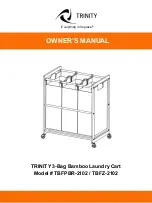
www.galantine.com
Ustensiles
Art de la table
Petits électroménager
Pâtisserie
Librairie
• Check the appliance and acces-
sory parts for the correct condi-
tion each time before operation.
It may not be operated if it has
been dropped or if it displays
visible damaged. Disconnect it
from the mains and arrange for
it to be checked by an electri-
cian in this case.
• Do not operate the appliance
near to sources of heat (cooker
hob, gas flames etc.) or in areas
at risk of explosion where flam-
mable liquids or gases are
found. Ensure constant air
circulation.
• Place the appliance on a heat-
resistant, steady and level wor-
king surface. Leave enough
space on all sides of the appli-
ance clear to prevent damages
caused by heat or steam and to
be able to work without being
restricted.
• The liquid level may only reach a
maximum of 4 cm below the top
rim. Hot liquid can splash out if
overfilled.
• Never operate the appliance
without liquid inside.
• If your appliance cooks to the
point of being empty, added dry
run protection prevents over-
heating. Allow the appliance to
cool down well in this case,
otherwise there is the risk of
scalding due to the production
of steam.
The surface can also become
damaged on enamelled applian-
ces.
• Do not use any sharp or pointed
objects to stir otherwise this can
damage the enamel (depending
on appliance type).
• The appliance must have fully
cooled down before cleaning or
transportation.
• Always hold the appliance by
the side handles to transport it.
• Pull the mains plug out after
each use to switch off safely.
• Only pull the plug to disconnect
the appliance from the mains -
never pull the cable!
• Do not keep the appliance out-
doors or in humid rooms.
• Never immerse the appliance,
mains cable and plug in water
to clean.
• When positioning the cable,
make sure that no one can get
caught in or trip over the cable
to prevent the appliance from
accidentally being pulled down.
• Keep the mains cable away
from hot surfaces, sharp edges
and mechanical loads. Check
the mains cable regularly for
damages and wear. Damaged
or tangled cables increase the
risk of electrocution.
15
















































